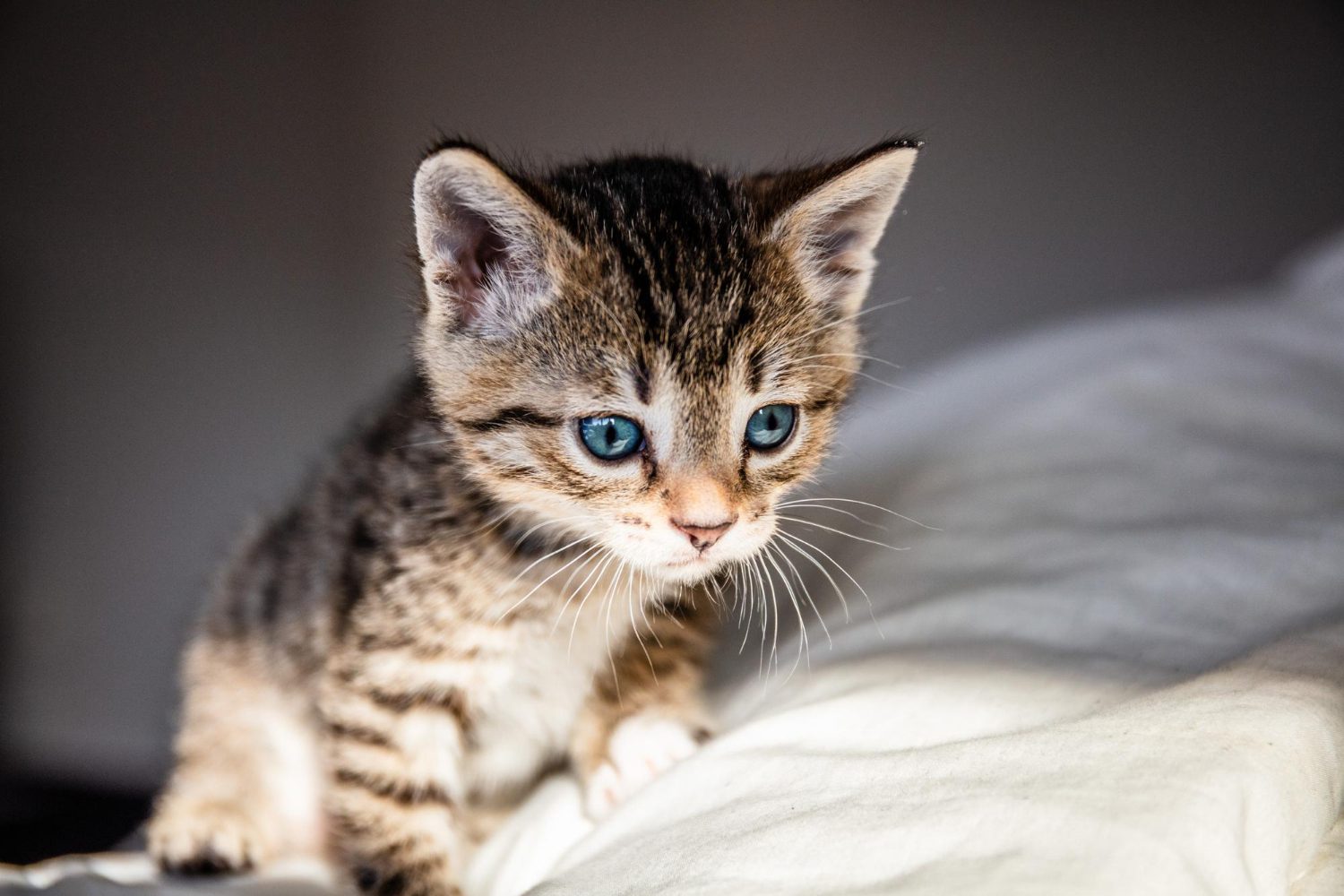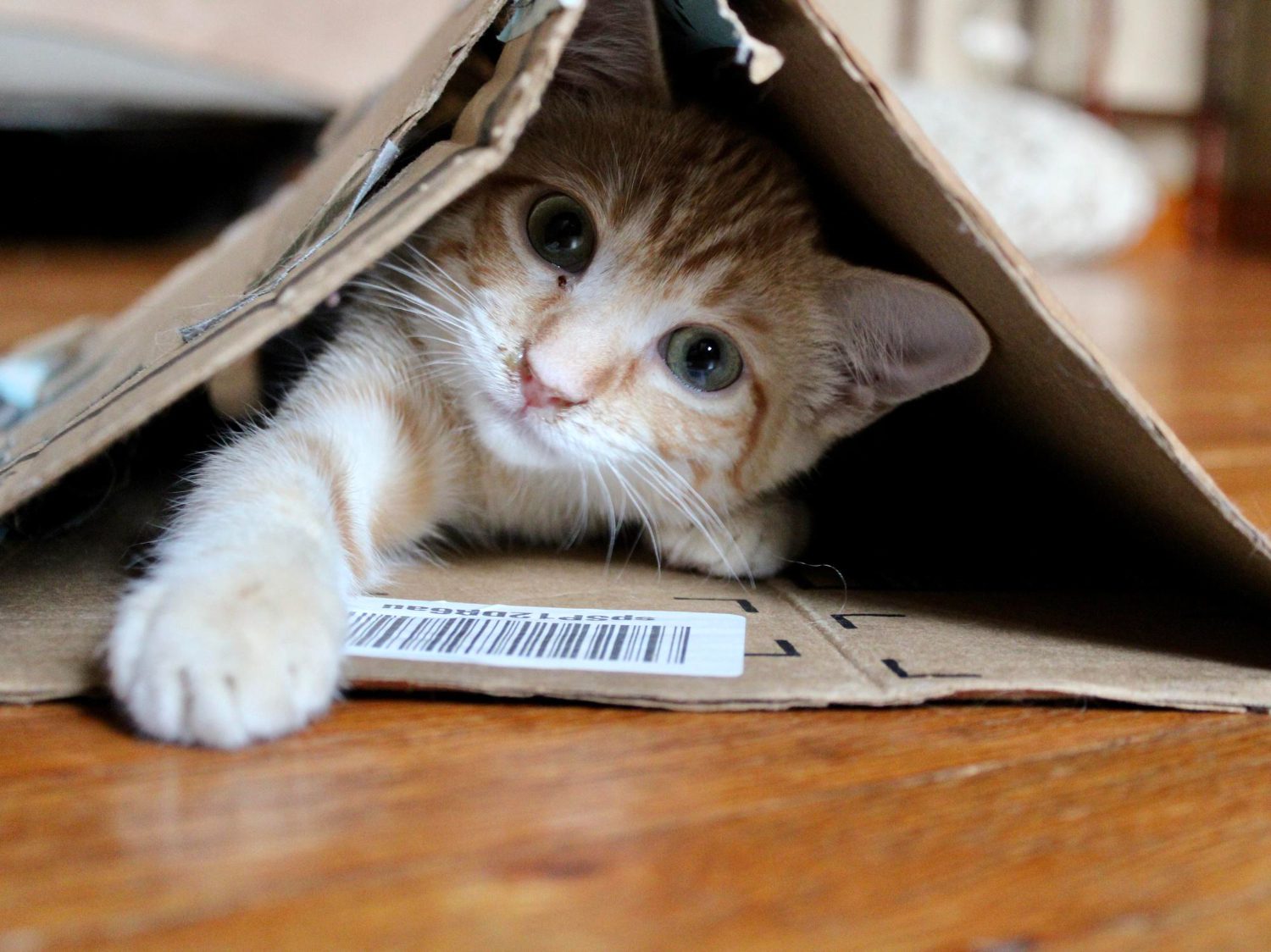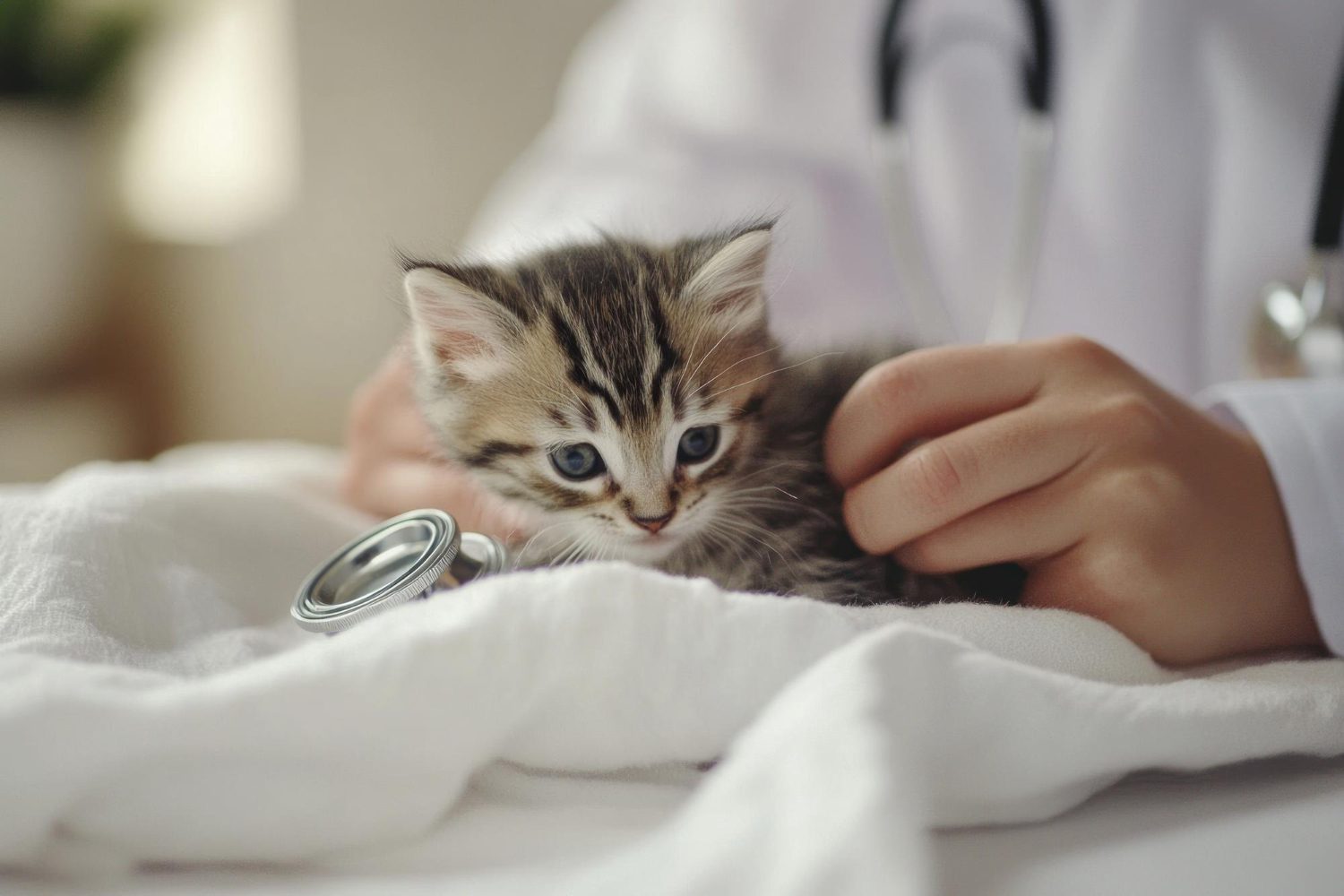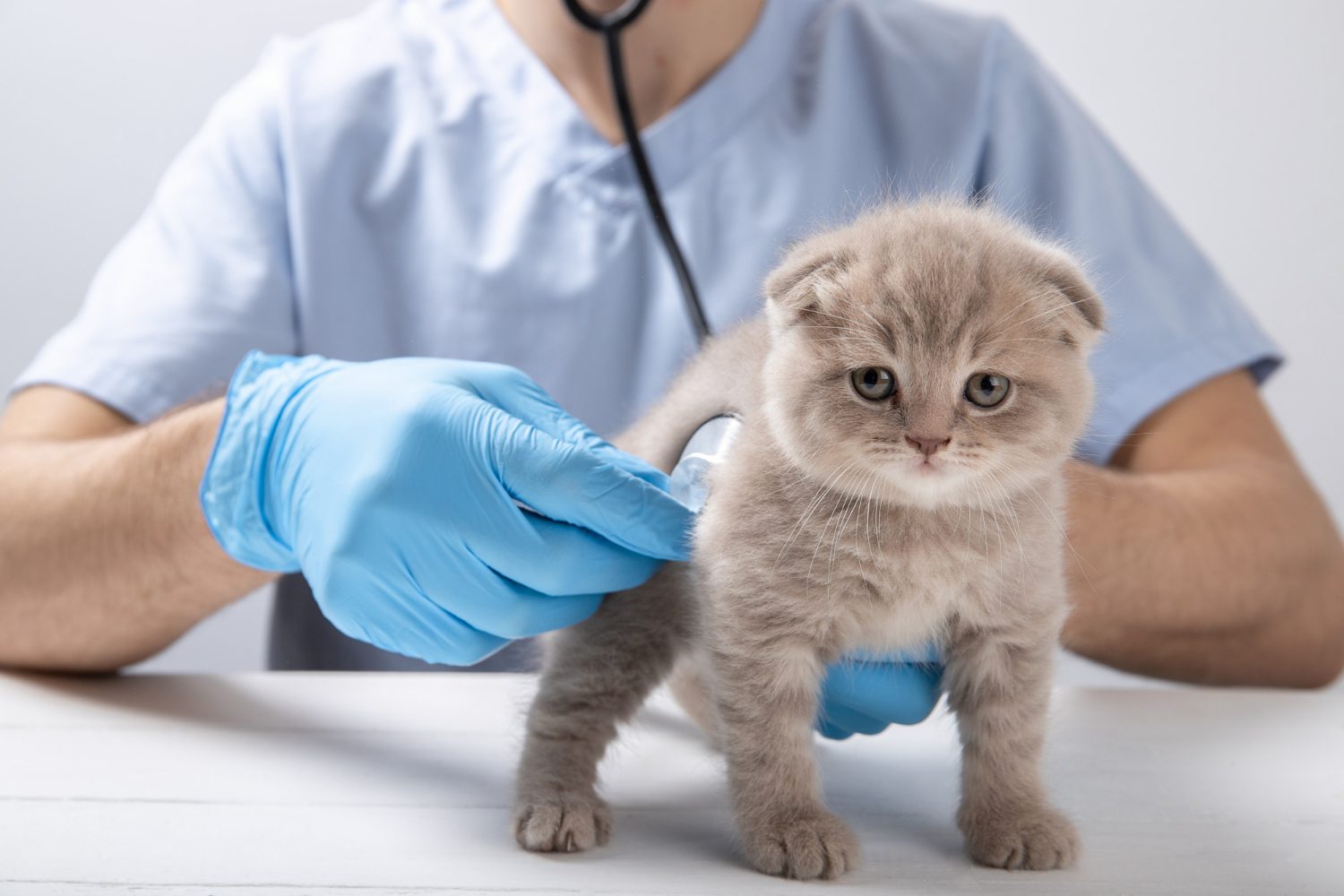Blood in Kitten Stool: When to See a Vet

By Evelyn Harcourt
September 29, 2025 - 1 min read
It is common for kittens to pass some blood or mucus in their stool, especially if they have been experiencing diarrhoea. This is most frequently seen at the age of 9-10 weeks, when a kitten is re-homed, particularly if their diet is changed.
Most kittens cope quite well with slightly bloody stool, but there is the potential for them to go downhill quickly. This article explores the potential causes of bloody stool, when you need to intervene, what tests your vet will run, and the best therapy options.
What Does Blood in Kitten Stool Mean?
The presence of blood usually confirms that there is inflammation in the gut. However, this is not a specific sign, and there are lots of possible causes for this.
Types of Blood (Fresh vs Dark)
Bright red, fresh blood tends to indicate bleeding further down in the digestive tract. This sort of blood is seen with colitis (inflammation of the colon, or lower gut) as well as with rectal or anal disease.
Black or tarry poop is seen when the blood has been digested. This occurs when the cat swallows blood (for example, if they have a tongue laceration), or when there is disease within the foodpipe, stomach or small intestine.
How to Recognise Abnormal Stool
A normal stool should be smooth and brown in colour. We do not expect to see any blood or mucus (slime).
When the stool is picked up using tissue paper or a gloved hand, it should not leave any liquid behind on the ground.

Common Causes of Blood in Kitten Stool
While blood in the stool confirms something is amiss, it does not tell us much more than this. There are lots of reasons that blood can be seen.
Parasites and Worms
Younger cats and dogs can contract worms while in their mother’s uterus, while breastfeeding and from eating things like raw food and grass. Fleas are another potential source, as they transmit tapeworm.
Almost every kitten is born with a worm burden, which is why routine parasite prevention is nearly always recommended by vets.
As well as worms, we frequently see other internal parasites, including Coccidia and Giardia. These infections can be trickier to treat and may persist for several weeks or longer.
Dietary Issues and Food Intolerance
The most common cause of bloody stool in young kittens is an abrupt diet change. When re-homed, many owners quickly change their food, which can lead to inflammation in the gastrointestinal tract.
After re-homing, keep your kitten on the same food the breeder offers as they settle in. If you wish to change the diet, wait at least a week to do this.
A large number of kittens are intolerant to the lactose in dairy, so offering milk or cheese can also cause gastric upset. Some young cats are intolerant or allergic to other ingredients, including chicken, beef, wheat, or potatoes.
Infections
Bacterial and viral infections are regularly seen, with some common culprits including Salmonella, Clostridia, E. coli, and Panleukopaenia virus.
It is important to know that some infections are zoonotic, meaning they can spread from kittens to humans. Those people who are pregnant, immunocompromised, very young or elderly would be at the greatest risk.
Stress or Environmental Changes
Kittens are delicate creatures; stress, routine changes, and re-homing regularly lead to colitis. This is an inflammation of the colon that can result in bloody and slimy diarrhoea.
Some cats are prone to this throughout their lifetime, while others seem quite resistant to it.
Serious Conditions to Rule Out
Although bloody stool is usually easily managed, it can indicate a more serious medical issue.
Zoonotic infections like Salmonella and E. coli should always be considered, as they pose a risk to human health. For kittens, Feline Panleukopaenia Virus (FPV) is a very serious consideration, with a mortality rate of about 90% in unvaccinated kittens.
Intussusception is another condition to consider. It occurs when the gut telescopes inside itself. This blockage can be quickly life-threatening and can be associated with infections or heavy parasite burdens.

When to See a Veterinarian Immediately
Though some mild cases can be managed from home, there are a few indicators that an emergency vet visit is needed.
Red Flags and Emergency Symptoms
Monitor your kitten closely for these emergency symptoms:
- Very pale or dry gums
- Lethargy or weakness
- Rapid breathing
- Abdominal swelling
- Passing large amounts of blood
- Persistent vomiting
- Complete food refusal
- Feeling cold to the touch
How Long Can You Monitor at Home?
For an adult cat with bloody stool, we are usually happy to monitor from home for a day or two, if they are coping well and only passing small amounts.
However, young kittens are fragile and can quickly go downhill. For this reason, it is usually sensible to arrange a checkup within 24 hours.
Veterinary Diagnosis and Tests
When your kitten is brought to the vet clinic, they’ll ask you about its recent medical history and perform a quick nose-to-tail check.
Your vet will assess their hydration levels and check for any evidence of abdominal pain, gut obstruction or fever.
Stool Analysis and Lab Work
Ideally, a ‘pooled’ stool sample is analysed- which means a bit of stool is taken 3 days in a row, and then this is mixed together, to ensure nothing is missed. The stool is examined under the microscope to check for evidence of parasites, and may also be cultured, to identify any bacteria.
Your vet may also recommend a blood test to check for evidence of infection or markers of inflammation and to assess for anaemia. Blood tests are also useful to ensure adequate protein levels and rule out organ involvement.
Imaging
For some patients, the vet may wish to run further tests, such as an abdominal scan. This is important when assessing for an intussusception, for example.
Imaging, such as abdominal X-rays and scans, is also helpful to rule in or out foreign bodies and gut obstructions.
Contrast media (such as barium) may be used to highlight structures like string or foam, that do not show up readily on X-rays.

Treatments for Blood in Kitten Stool
The best therapy will depend on the cause of the blood, though there are things to do that benefit most patients.
Deworming and Parasite Control
A broad-spectrum parasite treatment such as Fenbendazole should be given if due. This helps to treat infections with hookworm, roundworm, Giardia etc. Other pets in the home should also be treated if due.
Antibiotics or Other Medications
If your vet suspects or has diagnosed an issue such as Giardia, more specific therapy, such as antibiotics (like Metronidazole), may be given.
Diet Changes and Supportive Care
Most vets advise giving a bland and highly digestible diet for a few days. This may be a prescribed veterinary food, or something like chicken and rice. Most kittens do best with being fed little and often.
It is also a sensible idea to offer some prebiotics and probiotics. They can speed up the resolution of the diarrhoea.
Preventing Blood in Kitten Stool
It will not always be possible to prevent melaena (bloody stool), but taking some steps can help.
Routine Vet Checkups and Vaccinations
Your kitten should be seen regularly at their vet, and vaccines are due at 9 weeks of age and again 3-4 weeks later.
Routine parasite prevention should be started from about 3 weeks old and continued regularly.
Safe Diet and Hygiene Practices
Stick to a diet that is recommended for the kitten’s age. Any diet changes should be made very slowly over a period of 4-5 days.
Keep your kitten in hygienic conditions, removing any stool passed in their litter box right away. Any stool on their fur should be quickly cleaned off. It can help to trim fur short around the backend, especially in long-haired breeds.

Discover More Blood in Kittens' Stool
Contact us if you have any questions about bloody stool in kittens or if you’re worried about your pet. Our team is here to assist you.
Blood in Kitten Stool FAQs
Is Blood in a Kitten's Stool an Emergency?
In some cases, bloody stool will be an emergency. If your kitten seems unwell or is weak or lethargic, or if they have pale gums and are passing lots of blood, this would be classed as an emergency.
Can Stress Cause Blood in a Kitten’s Stool?
Stressful events like being re-homed, vet visits, or abrupt diet changes can all lead to colitis. Stress is a very common cause of bloody stool.
What Should I Feed My Kitten After Blood in the Stool?
The ideal option will depend on your kitten and it can vary. Prescribed diets such as Hills i/d or Royal Canin Sensitivity tend to be well tolerated. Chicken or white fish or egg and rice may also be a good choice for some.
Continue reading

Is Excessive Drooling An Emergency for Dogs?
Excessive drooling in dogs: causes, red flags, and when to call the vet.
Read article
Cat Tail Shaking: Is it an Emergency?
Learn whether your cat's tail shaking is normal, a warning, or urgent.
Read article
Eclampsia in Dogs: Symptoms, Causes and Treatments
Spot eclampsia fast, symptoms, causes, and vet treatments to protect mum and pups.
Read article